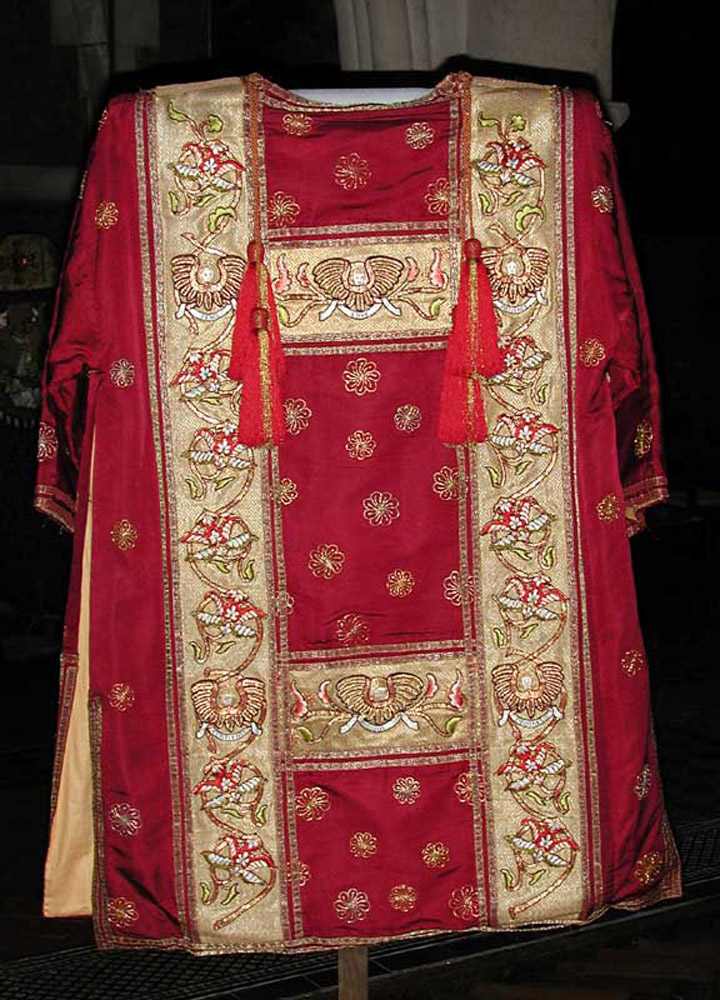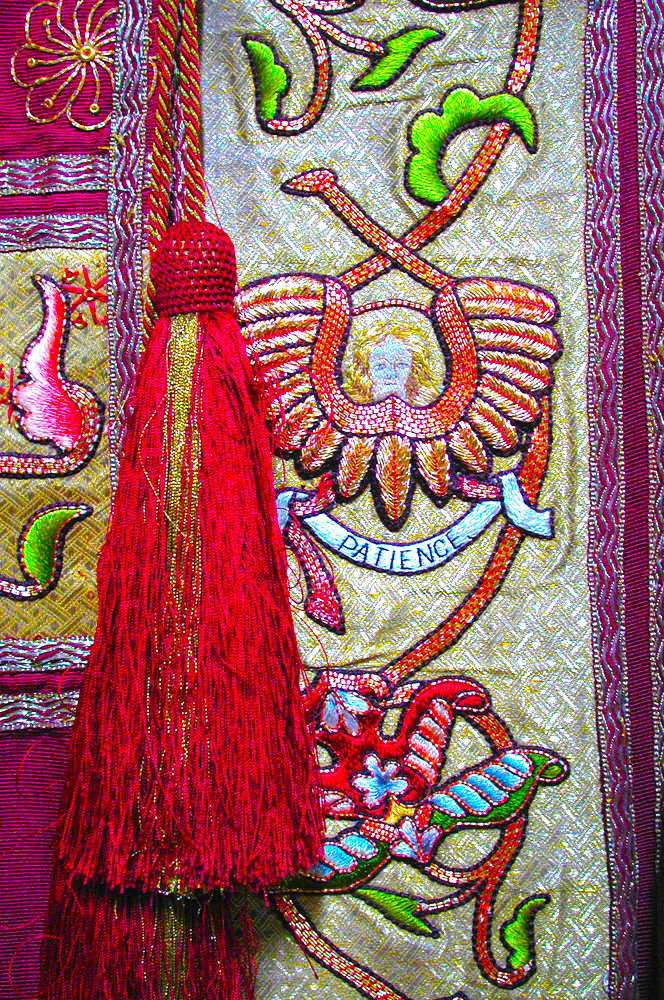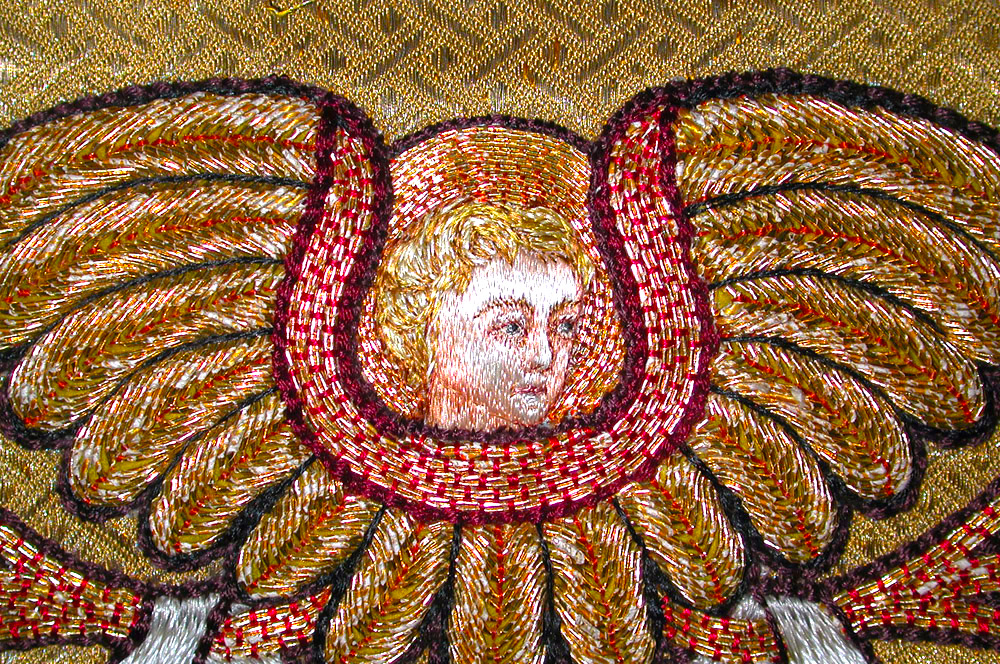


Embroidery on a red dalmatic, such as would be "worn by a Bishop under a chasuble" (Legg 99), at St Augustine's Church, Kilburn, London NW6. Under each angel is an embroidered word describing one of the Christian virtues — here, in the detail on the right, "patience." Of the tassels, Shawn Tribe writes, "In terms of their purpose, they seem clearly ornamental, however there is a connection to the practical it would seem; namely, the dalmatic and tunic at some point came to have ties at the shoulder/neck which would allow the vestment to be put on more easily and then secured with ties."[Click on the images to enlarge them.]

Close-up of one of the cross-pieces.
The ribbons featured in the embroidered decoration have their own meaning. In describing another vestment, Dr J. Wickham Legg explains that "interlaced ribbon ... signifies the complex life of this world, in which the spiritual world is mysteriously intertwined" (29).
Photographs by John Salmon, with thanks to St Augustine's Church; text by Jacqueline Banerjee. You may use the images without prior permission for any scholarly or educational purpose as long as you (1) credit John Salmon and (2) link your document to this URL in a web document or cite the Victorian Web in a print one.
Related Material
Bibliography
J., H. H. S. Augustine's Church, Kilburn. A Short Account of Its Structure, Vestments, and Other Works of Art. London: Morton & Burt, 1894. Hathi Trust. From a copy in the library of Princeton University. Web. 28 April 2021.
Legg, Dr. J. Wickham. "Notes on the History of the Liturgical Colours." Transactions of St Paul's Ecclesiological Society. 1885. 95-134. Google Books. Free Ebook.
Tribe, Shawn. "Tassels on Dalmatics and Tunics — Some Historical and Stylistic Considerations." Liturgical Arts Journal. 23 December 2019. Web. 29 April 2021.
Created 29 April 2021